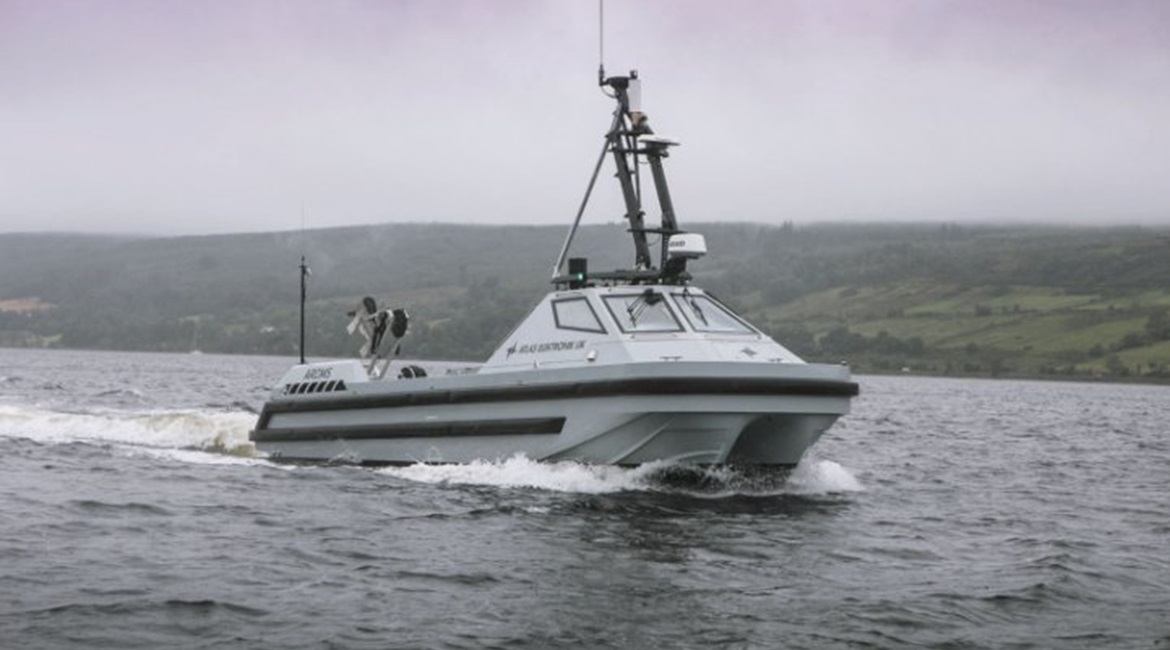
The UK Ministry of Defence (MoD) is moving forward with plans to deliver a new unmanned autonomous capability for peacetime mine countermeasures (MCM) tasks in UK waters under Project ‘Wilton’.
The programme – seen as a trailblazer for the Royal Navy’s (RN’s) exploitation of maritime autonomous systems in MCM – will provide a portable route survey capability for operations north of the Dee-Humber line. Initial operating capability (IOC) is planned for July 2020.

ARCIMS boat 6 – the future RNMB Halcyon – seen during Sonar 2094 side scan sonar trials in the Clyde. (AEUK)
Project ‘Wilton’ is being managed by the Defence Equipment and Support (DE&S) in conjunction with the RN. Atlas Elektronik UK (AEUK) is providing an 11 m ARCIMS unmanned surface vessel (USV) and a 15 m Vahana workboat, also fitted with an advanced autonomy controller, to support the deployment and recovery of towed sonar, unmanned underwater vehicles and remotely operated vehicles. These craft will be respectively known as RNMB Halcyon and RNMB Hebe in service.
At IOC the ‘Wilton’ capability will be delivered using a suite of equipment including the two autonomous surface craft, autonomous underwater vehicles (AUVs), and remotely operated vehicles (ROVs), plus a portable operations centre (POC) and associated communications. The 15 m Vahana workboat, Hebe , can be operated from shore but is also big enough to embark a suitably scaled portable operations centre as a manned asset.
This will provide the option to operate both Halcyon and Hebe from ashore in an unmanned mode. Alternatively, Hebe can be operated as a manned asset and control Halcyon from it to extend the range beyond line of site of the shore-based POC. Hebe
Looking to read the full article?
Gain unlimited access to Janes news and more...






